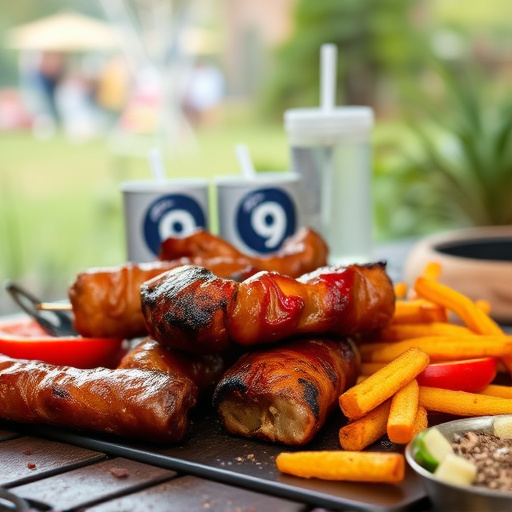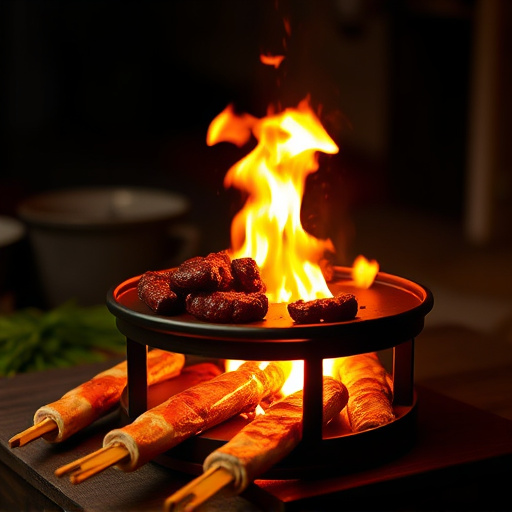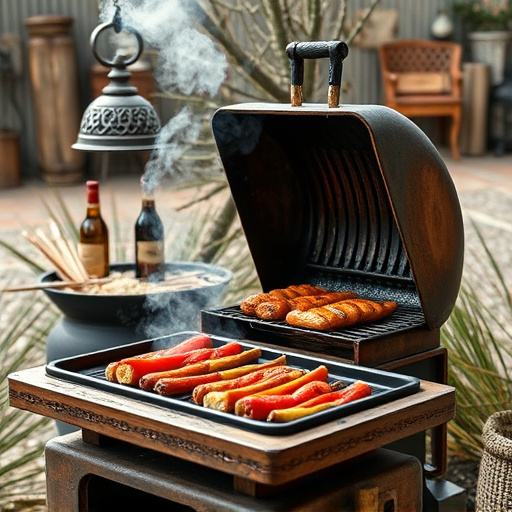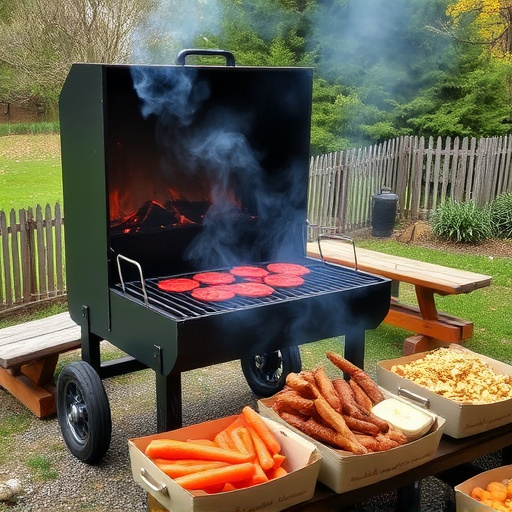Crafting the perfect BBQ Brisket Recipe involves understanding the unique characteristics of this flavorful beef cut, from its ideal composition to the science behind low and slow cooking. Key steps include selecting a high-quality brisket, marinating it with a blend of acids, oils, herbs, spices, and sweetness, and then slow-roasting it at consistent temperatures for 8-16 hours or more. Mastering these elements ensures a tender, juicy brisket that's sure to impress any crowd.
Unleash the juicy, mouthwatering flavor of perfectly marinated and low-and-slow cooked brisket—a true BBQ masterpiece. This comprehensive guide takes you on a journey from understanding the cut’s unique characteristics to mastering the art of marinating with expert tips and tricks. Learn the secrets behind equipment choices, precise timelines, and subtle techniques that ensure a tender, flavorful roast every time. Elevate your BBQ game with this definitive brisket recipe.
- Understanding Brisket: The Cut and Its Characteristics
- The Art of Marinating: Choosing the Right Ingredients
- Low and Slow Cooking Technique: Equipment and Timelines
- Mastering the Roast: Tips for Flawless Results
Understanding Brisket: The Cut and Its Characteristics

Brisket, a cut from the beef chest, is a favorite among BBQ enthusiasts for its remarkable flavor potential when cooked low and slow. This muscle tissue, known for its tough texture, becomes incredibly tender and succulent after hours of slow cooking. The key to achieving this lies in understanding the structure of the brisket. It consists of two parts: the point (a leaner section) and the flat (richer in fat). A good BBQ brisket recipe starts with selecting a high-quality cut, typically a packer brisket, which offers an ideal balance of meat to fat.
The characteristics of brisket play a crucial role in its cooking process. Its natural marbling, or flecks of fat, acts as a moisture source during slow cooking. The collagen in the connective tissues breaks down over time, transforming into gelatin, which helps keep the meat moist and tender. This slow transformation is what makes braising or smoking brisket such a rewarding experience, resulting in a mouthwatering BBQ brisket recipe that’s sure to impress.
The Art of Marinating: Choosing the Right Ingredients

The art of marinating is a key step in crafting the perfect BBQ brisket recipe. The right combination of ingredients can transform this cut of meat into something extraordinary, tender and bursting with flavor. A good marinade should include an acid (like lemon juice or vinegar) to help break down tough connective tissues, oils for moisture and richness, herbs and spices to add depth and aroma, and sometimes even a touch of sweetness to balance the savory notes.
When it comes to choosing ingredients, consider a blend of aromatic herbs like rosemary and thyme, spicy peppers for a kick, garlic for a pungent bite, and a splash of liquid smoke for an authentic barbecue flavor. The key is to experiment and tailor your marinade to your taste preferences. Take your time to let the brisket marinate slowly—the longer it soaks in these flavors, the more deeply they’ll penetrate the meat, resulting in a truly unforgettable BBQ brisket recipe that’s sure to impress any crowd.
Low and Slow Cooking Technique: Equipment and Timelines

The low and slow cooking technique for BBQ brisket recipes is an art that transforms tough cuts of meat into meltingly tender, flavorful delights. This method involves cooking the brisket at low temperatures (typically 105°F – 225°F) for an extended period, often 8-16 hours or more. The right equipment is key; a heavy-duty smoker or a crockpot with a keep-warm setting are ideal choices. These tools allow for consistent heat distribution and gradual cooking, ensuring the brisket stays moist and tenderizes uniformly.
Timeframes vary based on the size of the brisket and your desired doneness. As a general guideline, plan for approximately 1 hour per pound at the lower end of the temperature range (around 200°F) for a half-pound brisket, increasing to around 45 minutes per pound at the upper end (near 225°F). Regularly checking the internal temperature with a meat thermometer is crucial; once it reaches 165°F, wrap the brisket in foil or butcher paper to retain moisture and continue cooking until your desired tenderness is achieved.
Mastering the Roast: Tips for Flawless Results

Mastering the art of roasting a BBQ brisket recipe is akin to conducting a symphony; each step must be executed with precision and timing. The key lies in understanding the dance between heat, time, and moisture. Start by selecting the right cut—brisket is a muscle, so choose a point or flat cut for the best results. Next, seasoning is paramount; a dry rub of salt, pepper, garlic, and paprika will infuse flavor without overpowering the natural taste.
Time and temperature are crucial. Slow-roasting at temperatures between 225°F to 250°F (107°C to 121°C) for several hours allows collagen to break down, resulting in tender, juicy meat. Use a meat thermometer to track the internal temperature; aim for 165°F (74°C) before slicing. During cooking, avoid opening the oven frequently to maintain humidity; instead, use foil packets or a cover to trap steam, ensuring your brisket stays moist and tender.
